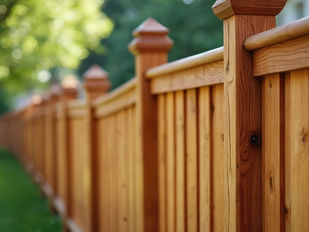Managing Dog Pee and Poop on Artificial Grass: A Complete Owner’s Guide
- Indy Artificial Turf

- Sep 16
- 4 min read

Installing artificial grass for dogs is one of the best gifts you can give to your pup and to yourself. No muddy pawprints, no yellow patches, and a yard that stays green through Colorado snowstorms and summer scorchers. But “low-maintenance” doesn’t mean “no-maintenance,” especially when it comes to bathroom breaks. Dog urine and solid waste still need smart management so odors don’t build, drainage stays fast, and your lawn keeps looking (and smelling) brand-new.
Below, the pet-friendly experts at Indy Artificial Turf share everything you need to know, from picking the right materials to daily, weekly, and seasonal clean-up routines.
Start With the Right Pet-Friendly System
Great results begin long before your dog takes the first potty break.
Choose a Permeable Backing
Look for turf labeled “pet” or “ultra-drain.” These products have larger drainage holes or a full-mesh backing that empties more than 1,000 inches of water per hour, which is crucial when you combine Colorado snowmelt with frequent rinsing.
Pick Antimicrobial or Odor-Control Infill
Standard silica sand works for most landscape lawns, but dog runs need an upgrade. We recommend:
Zeolite granules – A natural volcanic mineral that traps ammonia, the culprit behind urine smell.
Copper- or silver-infused sand – Adds a layer of germ resistance.
Envirofill® – An acrylic-coated sand impregnated with Microban® technology.
Optimize Base Construction
A three- to four-inch layer of compacted crushed granite allows liquid to flow away fast and won’t collapse under playful paws. At Indy Artificial Turf, we include a geo-textile “weed mat” on top of the base; it blocks weeds yet channels urine straight through.
Daily & Weekly Clean-Up Routines
Even with a pet-grade system, routine care is the secret to a fresh-smelling yard.
Scoop Solid Waste Promptly
Use the same bags or pooper-scoopers you would on a walking trail. If residue lingers, spritz with water or a 50/50 white-vinegar solution and blot with a rag.
Rinse High-Traffic Zones
Give potty spots a 60-second hose spray once or twice a week (daily for multi-dog households). A basic garden nozzle on “shower” or “flat” setting is plenty. Note that high-pressure jets can displace infill.
Spot-Treat Odors
Enzyme-based turf cleaners break down urea and proteins rather than masking them. Spray, let sit for ten minutes, then rinse. They’re safe for pets, non-toxic, and biodegradable.
Deep-Cleaning Checklist (Monthly or as Needed)
1. Clear Debris – Blow or rake away leaves and twigs; organic buildup traps moisture and smells.
2. Brush the Fibers – A stiff push broom lifts flattened blades and redistributes infill that may have migrated.
3. Enzyme Flush – Apply a diluted enzyme cleaner across the entire run, especially if the weather has been hot and dry (odors intensify in heat).
4. Check Infill Levels – If fibers look “thirsty” (more than ¼″ of backing visible), top-off with fresh zeolite or antimicrobial sand.
5. Inspect Seams & Edges – Make sure curious diggers haven’t tugged at the perimeter; repair glue spots early to keep bacteria from hiding underneath.
Handling Winter Conditions
Colorado winters bring unique challenges, mostly solved with basic tools and good timing.
Shovel With Plastic – Metal blades can nick fibers; use a plastic snow pusher or stiff broom to clear heavy snow so dogs can access their area.
Avoid Salt and De-Icers – Rock salt can degrade turf backing and irritate paws. If ice is stubborn, sprinkle pet-safe calcium magnesium acetate sparingly, then rinse come spring.
Warm-Water Rinse for Frozen Pee Spots – A bucket of warm (not boiling) water loosens frozen urine crystals and carries them through the drainage layer.
Myth-Busting: Common Concerns Debunked
“Turf will smell worse than real grass.”
Not when installed with a permeable backing, odor-absorbing infill, and a weekly rinse routine. Natural grass actually traps ammonia in damp soil, creating stronger smells.
“Bleach is the only way to sanitize.”
Wrong. Bleach degrades polyethylene blades over time. Enzyme cleaners or vinegar solutions neutralize bacteria safely and effectively.
“I need to replace infill every year.”
Nope. Most pet owners top off every 3–4 years. Regular brushing keeps existing infill where it belongs.
Training Tips for New Turf Users
1. Pick a “Potty Corner.” On day one, walk your dog to the same spot after meals or naps. Consistency means most urine concentrates over a small area you can rinse quickly.
2. Reward With Treats. New texture underfoot can confuse sensitive pups; positive reinforcement speeds acceptance.
3. Temporarily Blockplay Zones. If you’d rather not designate a corner, install low garden fencing for two weeks until habits form.
Within a month, nearly every dog will happily use the turf without backsliding.
When to Call In the Pros
If lingering odors persist after an enzyme flush or you notice pooling water, schedule a professional turf groom. Indy Artificial Turf’s service crew uses power brushes to deep-agitate infill, apply commercial-grade neutralizers, and check drainage pathways. An annual service visit is usually enough even for large multi-dog households, and it can extend turf lifespan beyond the 15-year warranty mark.
Fresh Turf, Happy Pups. Get Started Today!
Dog-friendly artificial grass transforms muddy chaos into a clean, evergreen paradise when you pair the right materials with a simple maintenance routine. Choose ultra-drain backings, odor-eating infill, and antimicrobial fibers, then commit to quick rinses and monthly deep cleans. The result is a yard that looks pristine, smells fresh, and keeps paws (and floors) spotless, no matter how many pups call it home.
Ready to upgrade your dog’s playground or need a pro tune-up for an existing lawn? Call Indy Artificial Turf at (720) 263-6513, email info@indyartificialturf.com, or request a free consultation today. Let’s create a pet-perfect yard that makes bathroom breaks a breeze and lets you spend more time playing fetch and less time scrubbing floors.






